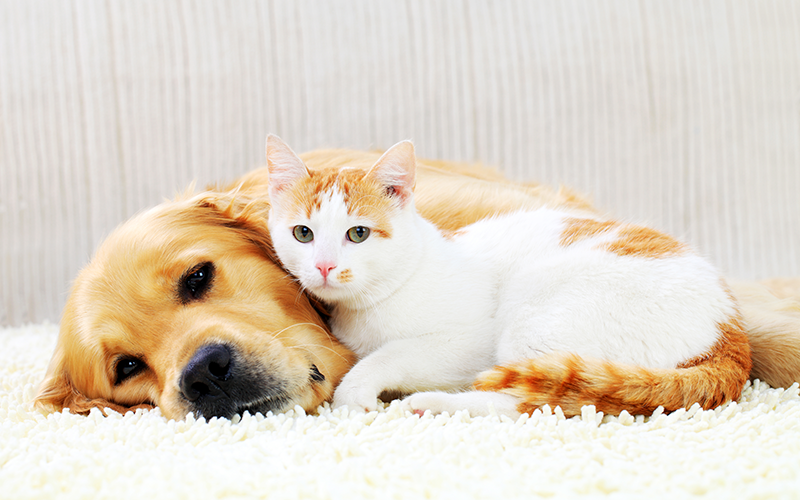Here is a shareable checklist (below) to help your clients provide the most comprehensive care for their new furry friend. Sign up for our mailing list to ensure you receive the latest content from us.
While many shelters worried that the COVID-19 pandemic would see a large flux of pets into foster care or shelters due to pet owners falling ill with the disease, it’s been quite the opposite. Heartwarming stories have emerged over the past several months of shelters across North America emptying out during the pandemic due to the demand for pet adoptions.
The ASPCA reports that Los Angeles and New York saw a 70% increase in animal placement in foster homes. According to Kitty Block, president and CEO of the Human Society of the United States, pet adoptions have increased 90% in some cities. In a recent interview with Wired, Block said that some New York City shelters are seeing application numbers at 10 times the normal rate. And in Canada, it’s a similar story. In a July 4th, 2020 interview with CBC News about the skyrocketing demand for pet adoptions, the BC SPCA’s general manager of community relations Lorie Chortyk, explained how her organization saw 200 applications for a single puppy!
But once that new puppy, kitten, or senior dog or cat has been adopted, what are the responsibilities of the new pet owner?
1. Spaying and Neutering
The population of homeless pets is still high, despite the increased adoptions that occurred over the past 6 months. By spaying or neutering your pet, you’re helping to control pet homelessness. Additionally, you’ll improve the health and longevity of your pet. Spaying prevents uterine infections, as well as uterine, ovarian, and breast cancers. And your female pet won’t go into heat! Neutering your pet prevents testicular cancer and some prostate problems. Your neutered pet is less likely to roam in search of a mate. Your veterinarian can advise you on the best age to spay or neuter your pet.
2. Preventive Care
Heartworm, fleas, ticks, and intestinal parasites aren’t following physical distancing protocols! It’s just as important to protect your pets now—if not more so—to avoid an unnecessary trip to your veterinarian for a preventable condition such as tapeworm, flea allergy dermatitis, or
Lyme disease. With heartworm diagnosed in dogs in every state and mosquitoes thriving in many areas due to climate change, protecting your pets from this preventable disease is important and can be as simple as giving your pet a monthly preventive! Some preventives even protect pets from intestinal parasites, fleas, and ticks. Speak to your veterinarian about the best preventive for your pet.
Vaccines protect your pet from viruses that can be debilitating, costly to treat, and even deadly. Core vaccines for cats and dogs are given starting when your pet is a puppy or kitten and boosters are given on a regular basis. Consult with your veterinarian to determine the vaccines that your pet needs.
3. Regular Wellness Exams
A regular wellness exam is your opportunity to ensure that your pet has a long and healthy life. Both dogs and cats need annual exams to monitor their health (weight, condition, behavior, etc.) and identify health issues. As part of their survival instinct, pets are masters at hiding signs of disease. A health condition can become advanced before your pet shows any signs, but during a wellness exam, your veterinarian may detect early signals of disease. Early disease detection during a physical exam (such as heart disease, kidney disease, obesity, and dental disease) can help your pet maintain his optimal health. Your veterinarian will make recommendations on how frequently your pet needs a wellness exam based on its health status.
4. Diet and Exercise
A complete and healthy diet and regular exercise are important for everyone, including your newly adopted pet! While estimates vary, in 2018, an estimated 60% of cats and 56% of dogs in the US were overweight or obese. Because obesity can lead to other diseases such as diabetes, arthritis, high blood pressure, kidney disease, and cancer, keeping your pet at his or her ideal weight may save its life. To prevent obesity, proper pet nutrition and exercise are key. Start your pet off right the day you bring him home! Don’t let him graze all day or you may set up a pattern of overeating. Pets need daily physical activity to help them stay in shape. Dogs need at least 30-minutes of physical activity each day, but the activities and length of time being active will vary according to your dog’s breed, age, and current physical condition. Cats need about three 5-minute intense play periods each day. Your veterinarian can help you choose an appropriate diet for your pet and make recommendations for activities suitable for your pet.
5. Dental Health
It’s estimated that 80% of dogs over the age of 2 have signs of dental disease and somewhere between 50 and 90% of cats over 4 years of age have some form of dental disease. Sticky plaque builds up and eventually hardens to form tartar. Tartar continues to build up, eventually causing the gums to pull away from the teeth creating small pockets where bacteria can flourish. Dental disease can lead to loss of bone, jaw fractures, and can lead to disease of the heart, liver, and kidney. Regular teeth brushing at home and regular teeth cleanings by your veterinarian will help prevent dental disease from occurring. Your pet should have a dental exam at least once a year AND at the first sign of dental disease (such as bad breath, bleeding or red gums, bloody saliva, loose teeth, receding gums, or difficulty eating). Contact your veterinarian for the best dental plan for your pet.






